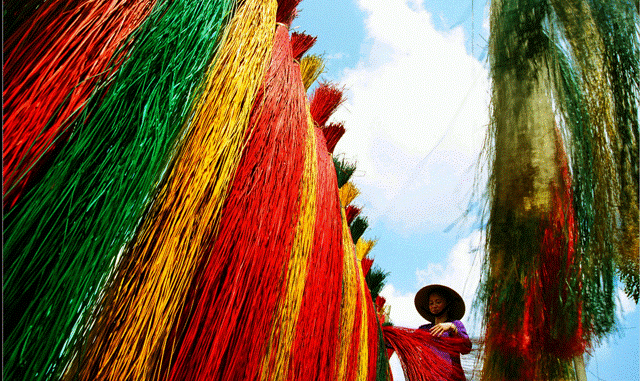
The mat weaving profession in Hung Ha has existed for a long time. List of Celebrities Thai Binh wrote: Research on the development of mat weaving techniques in Hai Trieu (Tan Le – Hung Ha today), there are 2 phases: phase 1, standing weaving table, no horse yarns. From the second stage, the weaving becomes more beautiful, the yarn is knit more evenly, and of course, the product is more popular. This improved work, according to folklore documents, belongs to Pham Don Le Poinsettias. Pham Don Le, during a visit to China, learned and learned some secrets of the weaving profession in Guangxi China, then when he returned he brought it back to the villagers. Thus, the Pham lineage from the 10th-11th century had the merit of spreading the improved re-weaving profession due to the Pham Nguyen surname himself. The technique of weaving mats from there is basically still circulating to this day,
Chieu Hoi has many different types: cabbage, parked, potted, smooth, vertical color, little flowers, cashew, twine, etc., with different sizes. The new mat is ivory-white, good-looking, and has a pleasant aroma of copper rush. Long-term mat turns yellow, smooth, moderate soft, easy to wash, clean, quick draining, quick drying.
Historical features of the Weaving and mat weaving in Hoi village
People still refer to the name of the mat here as “Hoi Hoi” because these mats are woven in Hoi village. Located in Tan Le commune, Hung Ha district, Thai Binh province, Weaving and mat weaving in Hoi village is one of the traditional craft villages that have existed for a long time. Even the people living here do not know when the projection profession appeared in the village and who the craft group is.
According to legend, in the period of Tien Le – Ly in the X – XI centuries, the village began to weave mats, then thrive in the Hau Le period. And the person with the greatest merit at that time was the Poinsettia Pham Don Le. 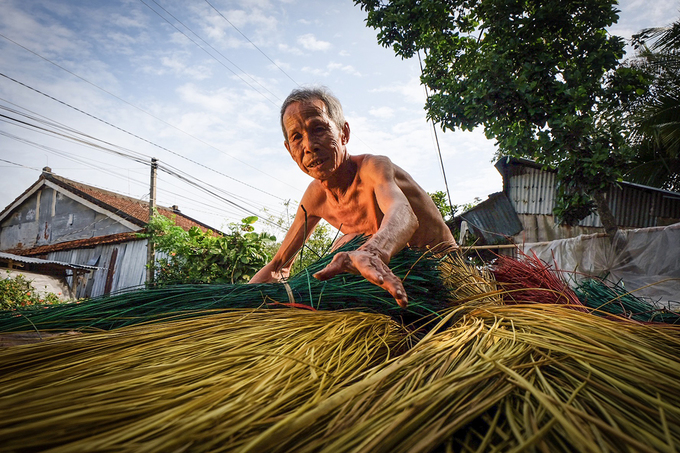 The Weaving and mat weaving in Hoi village has a very long tradition
The Weaving and mat weaving in Hoi village has a very long tradition
In the past, Hoi village had the profession of weaving mats and used vertical weaving tables. Projection making like that is not sure and the side is beautiful. During a visit to the Ming Dynasty emissary, this Poinsettia learned and learned the secret of weaving mats of the Guangxi, China. When he returned, he passed on this technique to the villagers. And since then, Hoi mat village has a more beautiful weaving profession, more art and so is famous. Since then, people here worshiped him as Trang Chieu and established Pham Trang Nguyen temple to remember his merits.
Do you know how to weave Hoi mat?
Referring to mat making techniques, Hoi village is one of the places where the most sophisticated techniques are gathered to make a mat. From the loom, the raw material to the mat weaver, it all creates an unmatched traditional product.
The main materials used to make mats are rush and jute. These are two types of trees that are commonly grown in areas near rivers, where there is a lot of alluvium, and convenient, Hoi Village is located between two big rivers, the Red River and the Luoc River, which are very suitable for growing these plants. . Then these plants are harvested and gone through many meticulous and careful steps to meet the requirements of the mat materials. 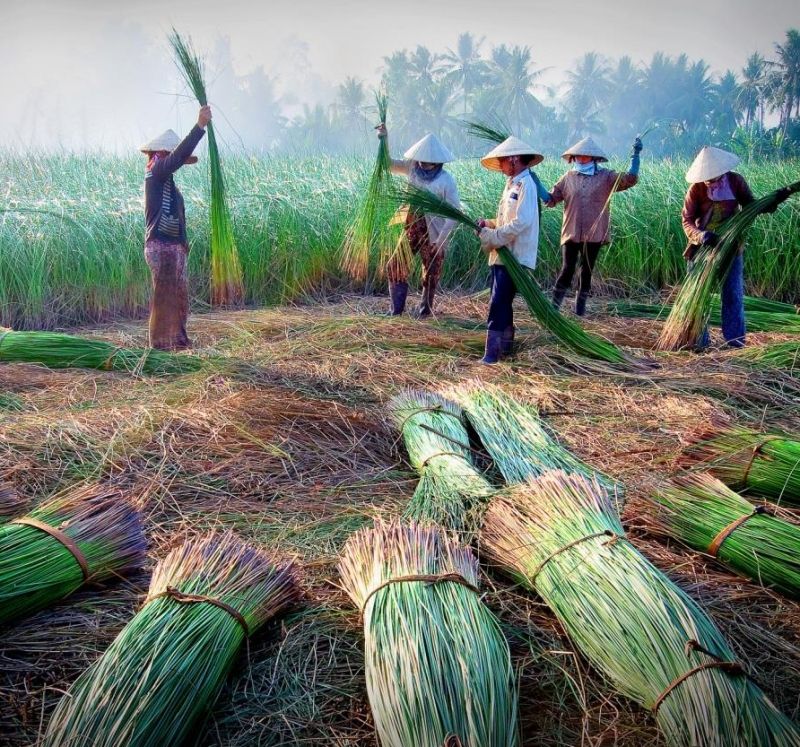 Seagrass and jute are two types of materials for mat weaving
Seagrass and jute are two types of materials for mat weaving
Depending on the type of mat that needs to be woven, rush and jute fibers will be dyed according to each product. To be able to weave a satisfactory mat requires a meticulous hand, rich experience and creative techniques of the weaver. Hard work of the mat weavers
Hard work of the mat weavers
Chieu Hoi has many types, there are flower mats, smooth ones, twine mats, … The carpenter often weaves a variety of different patterns from flowers, cabbage, and letters. cage weaving or drawing, … On average, the Weaving and mat weaving in Hoi village a day can make 20 pairs of mats. Productivity increased significantly, and so did the income of the people. Normally, the time for each household to weave mats will be about 8 months, and for the remaining months, they will spend on the fields.
Weaving and mat weaving in Hoi village – weaving the mind
Weaving and mat weaving in Hoi village is located about 40 km from the center of Thai Binh city. Through immense rice fields, visitors will come to this village with a long tradition of weaving mats.
The village has more than 3,000 households, with more than 80% of the families working as mat weaving. Through many ups and downs, historical events, the people here still keep their job fire, love their job so much and increasingly bring the reputation of their Hoi Hoi products far away.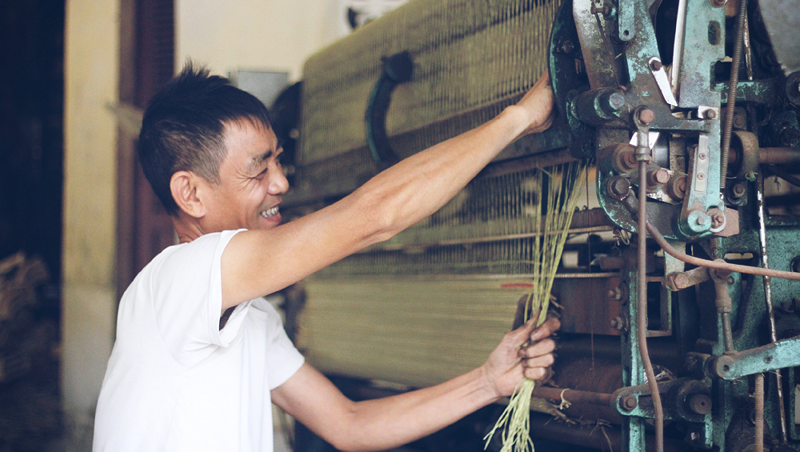 Hoi Hoi mat weaving village – weaving the mind
Hoi Hoi mat weaving village – weaving the mind
The weavers daily make products that are good in quality and beautiful in appearance, bringing in it the mind of the weaver. Coming to explore Hoi Hoi mat weaving village , you will experience a very interesting and new space, not only from the steps of picking sedge, choosing rope, but also witnessing the sincere people. how to make a mat here by hand. Each step, from meticulous and diligent steps, under the hands of a professional craftsman, perfectly beautiful mats are perfected.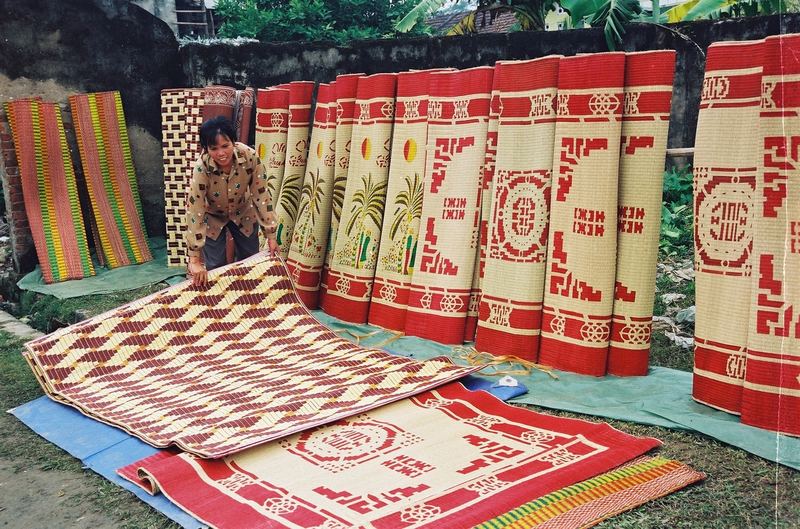 Under the hands of a professional craftsman, perfectly beautiful mats are perfected
Under the hands of a professional craftsman, perfectly beautiful mats are perfected
In addition, you can also experience making mats here, you can ask the weavers for permission, they will not hesitate to guide you, it will be a very enjoyable experience!
Compared with other types of mats in other places, Hoi mats bring a completely different feeling and quality and skillful knitting technique. To this day, these products of Weaving and mat weaving in Hoi village have increasing value, visitors come here not only because of the distant rumor but also because of the excellent quality that the skilled craftsmen do. Candlestick!
Photo: Internet
